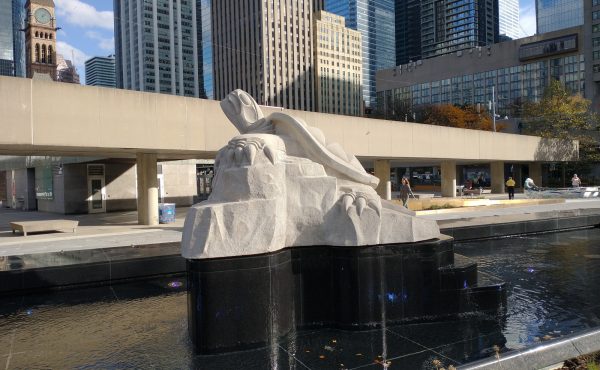Planning ahead
Amid the glamour that comes with the opening of the Michael Lee-Chin Crystal at the ROM, it’s easy to forget that, despite the creative architecture finally finding a home in our city, urban planning in Toronto is still as neglected as ever.
As detailed in the current issue of Toronto Life, the city’s planning department is severely understaffed. While it struggles to stay on top of the planning battles that end up at the Ontario Municipal Board (OMB), proactive planning (i.e., knowing what kind of development is best suited for a neighbourhood before development applications roll in) is left to flounder.

Enter People Planning Toronto (PPT), a coalition of neighbourhood groups from across the city who held their first Neighbourhood Planning Summit May 26, with the goal of devising strategies for change. At the end of the day, one of the main priorities attendees established was to push the city to pull together its secondary plans sooner rather than later. The official plan is an overarching scheme for the whole city. Secondary plans, and the zoning bylaws that accompany them, however, contain the specific details about the kind of development both developers and residents can expect in an area. Without them, both groups are free to interpret the official plan in ways that suit them best. Not surprisingly, battles follow.
“The new official plan was passed in 2002 without any secondary plans in place for high-growth areas,†says Sandra Shaul of the Annex Residents’ Association, whose neighbourhood was one of those slated for “high-growth.â€
“Everyone’s calling for the elimination of the OMB, and I’m not saying the OMB is a wonderful institution, but think about it: the OMB has been around for decades,†says Shaul. “Ten years ago, the average person hadn’t heard of those three letters. What happened? Why has it suddenly become such a big deal?â€
Detailed secondary plans that are regularly updated to reflect changes within the neighbourhood might just eliminate the need to dedicate so much money to sending staff to OMB hearings, argues Shaul. “They have money to go to the OMB, but they don’t have money to do the proper planning,†she says. “Maybe you come up with a system where you shift legal funds into the planning budget so you can fast-track the missing secondary plans that are leading to this.â€
Regardless of how far PPT gets with the city, Shaul says the neighbourhood summit was a success unto itself. “There are people [in other neighbourhoods] who feel they’re all alone and don’t know how to fight. If, in the future, they need people in the Annex to fight on their behalf, we’ll come out,†she says. “We’ll pool together a few residents’ associations to fight on their behalf.â€
– – – – – – – – – – – – – –
Spacing’s managing editor Dale Duncan writes a weekly column for Eye Weekly focused on City Hall. Each week we’ll post her columns on the Spacing Wire.





3 comments
I hope they’re successful, as proactive planning works better for everyone. Even developers benefit if there are clear local ground rules for them to abide by, though obviously some will still try to bend them.
“As detailed in the current issue of Toronto Life, the city’s planning department is severely understaffed.” Well that was one of the more polite things said about City Planning in the story.
How about a complete lack of vision ?
Yes a complete lack of vision and leadership. And that’s just unacceptable. Our city is being destroyed by these incompetents. If these guys are incapable of doing the job, get them out and replace them with people who care about this city, have a vision, and will fight for it.
Whenever I’ve spoken to anyone in city planning I feel like they are completely burned out, watching the clock, just waiting for their retirement.
Meanwhile our city is going down the drain. It’s absolutely infuriating.